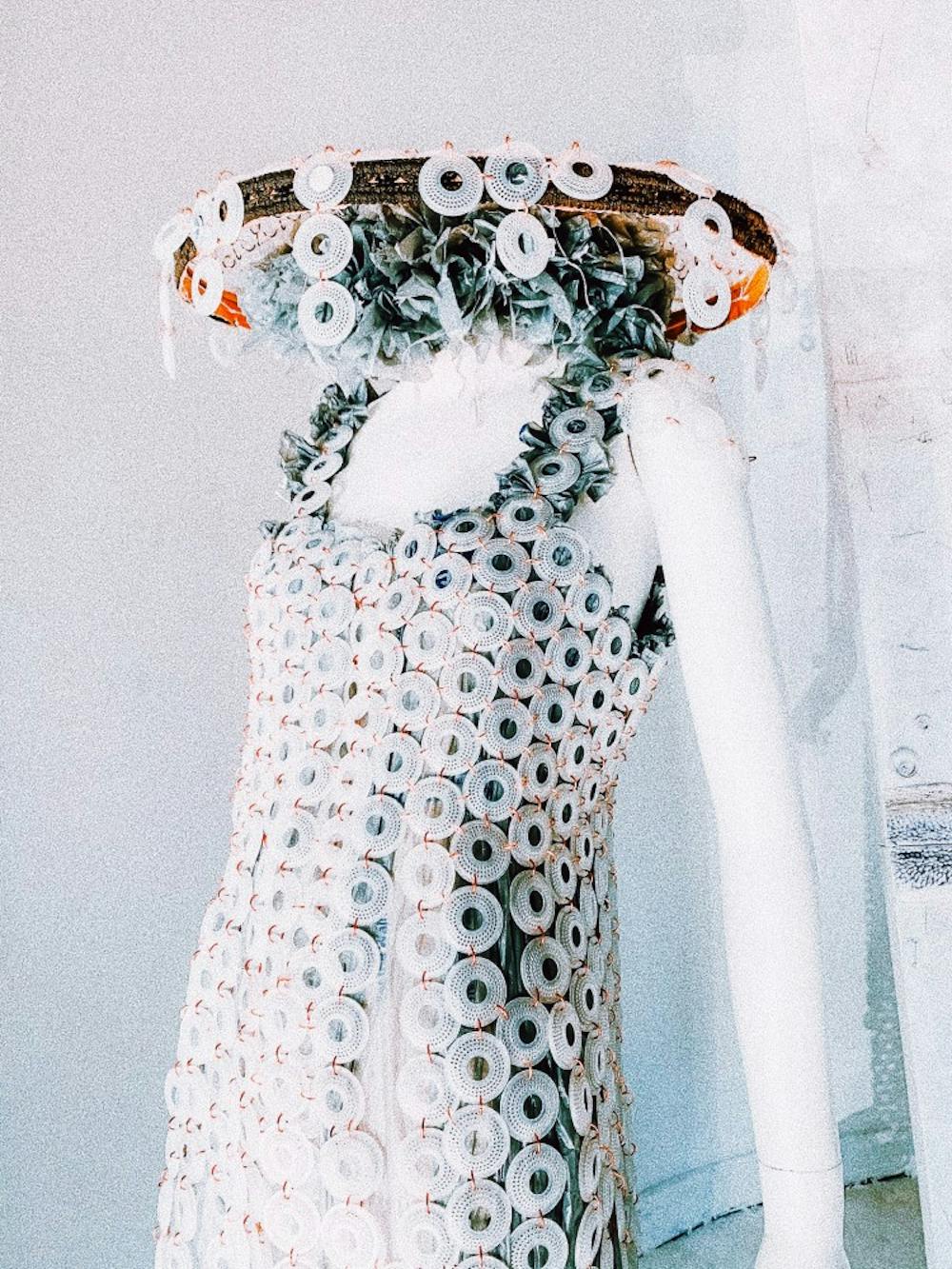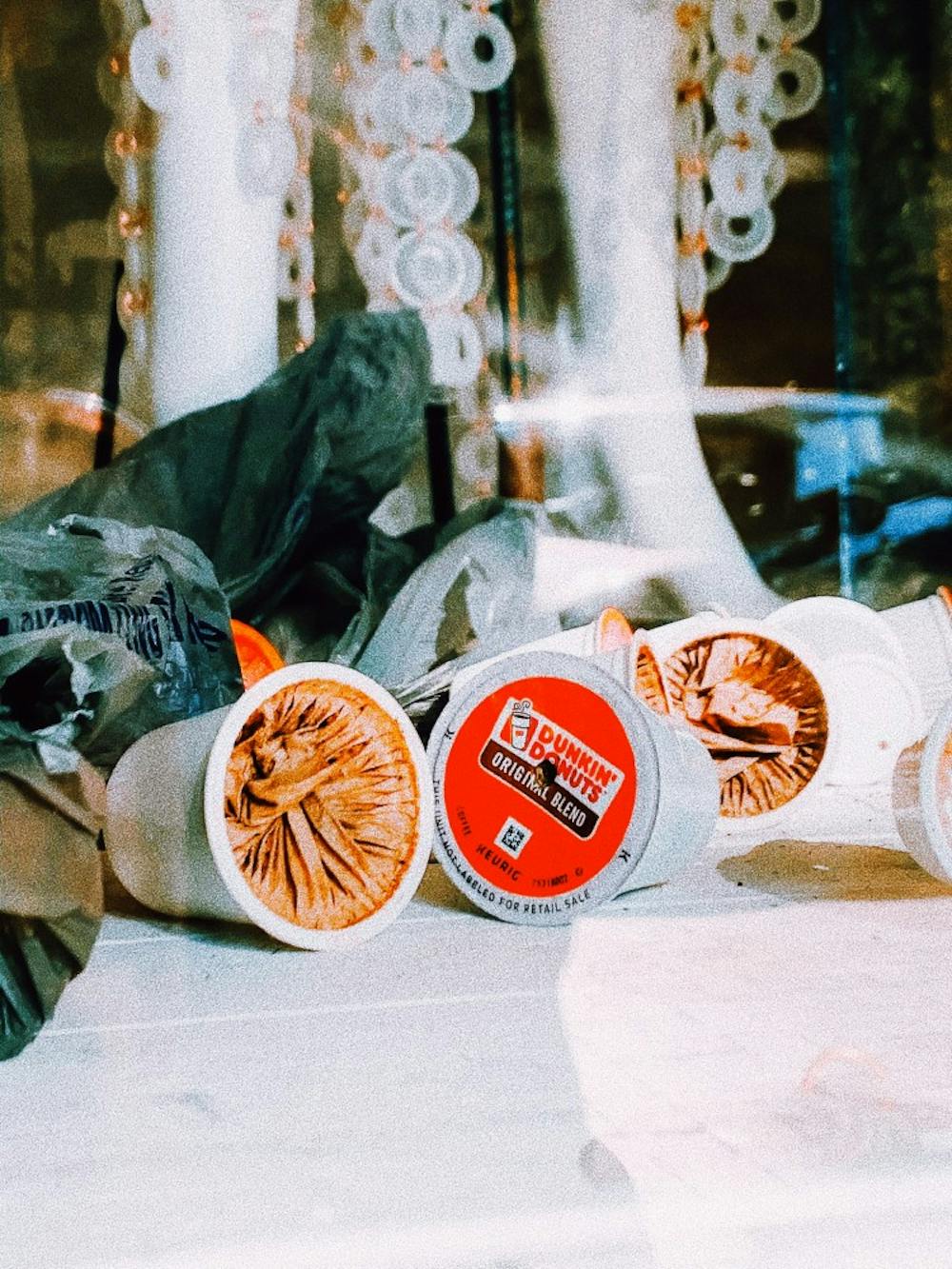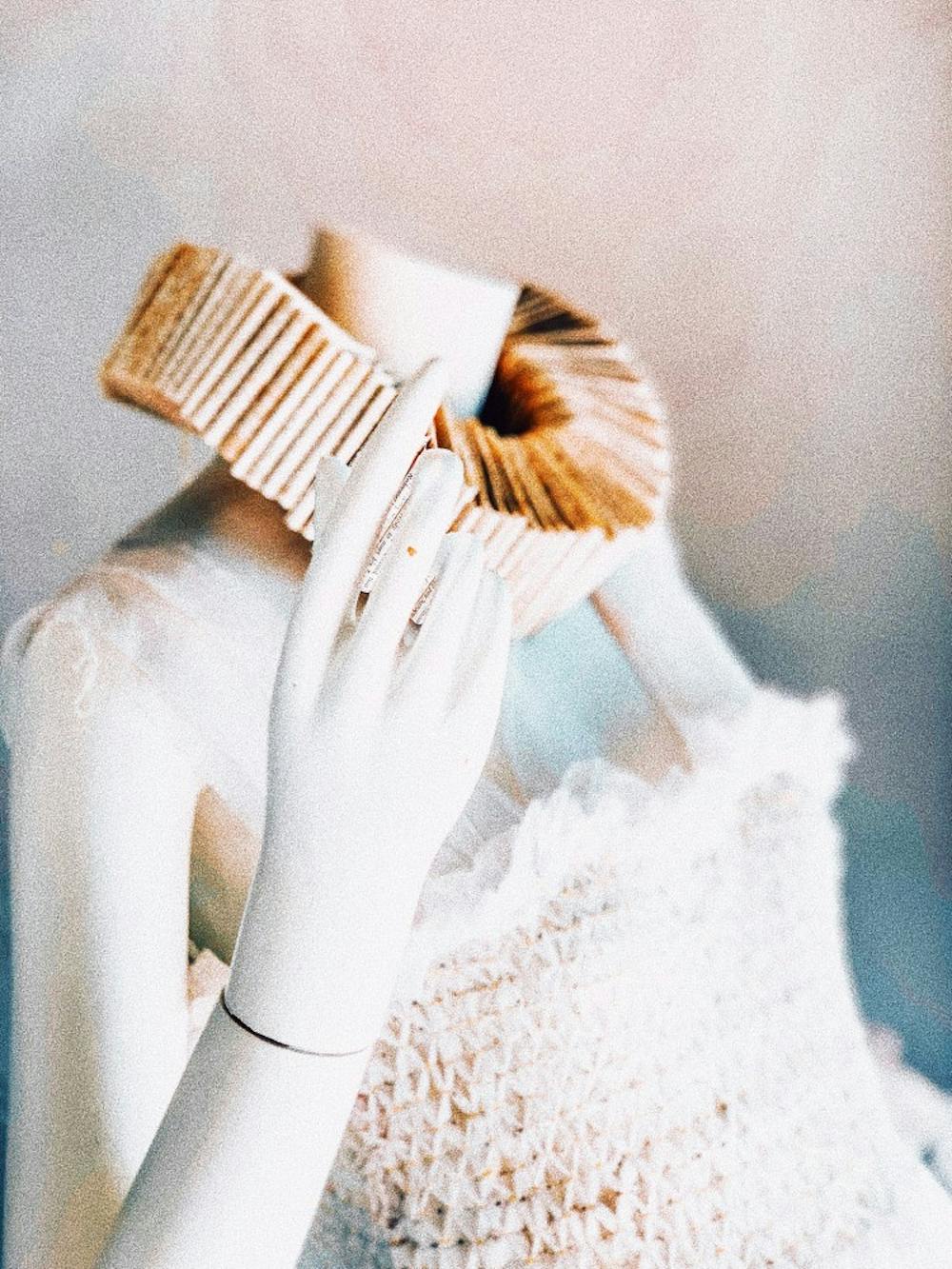One of the latest trends in the fashion universe isn’t a color or fabric, it’s a means of production. Sustainable clothing has become a global movement amid rising concerns of the environment and climate change in recent years.
For Columbia artist, Flavia Lovatelli, repurposing materials was a familiar concept long before the fashion industry’s sustainability trend began. She says that her inspirations date all the way back to her childhood in Italy.
The idea for her paper coils, her signature seen in various sculptures sprawled around her home, originated when her father would roll receipts at the movie theater. Lovatelli also grew tired of seeing anything with potential thrown out, such as her father’s cigar or wine boxes.
To this day, every piece of her work is recycled and transforming trash into art has become second nature.
“Everything I’ve always done, even clothing, was refashioning and repurposing things I already had. I never bought something new,” Lovatelli says. “I was always inspired by something that somebody was throwing away. I would see it going, ‘Oh my gosh, that still has so much life in it. I’m going to turn it into something new.’”

Lovatelli considers herself to be a sustainable artist, not necessarily a fashion designer, despite organizing and participating in a “trashion” runway show and art exhibition each year. The EcoFab Trash Couture show and the (Re)Current exhibition are held at Tapp’s Arts Center in Columbia, and this year’s (Re)Current is on display until October 31.
About 90 percent of Lovatelli’s materials are donated to her from friends, community members and Sonoco Recycling.

The three dresses she made for this year’s EcoFab show employed the use of dryer sheets, Keurig K-cups and plastic mini blinds all dropped off at her house. She allows for her designs to be guided by the pieces she is presented with.
“The inspiration comes from almost nine years of doing this, but most of it comes from the materials themselves. How would they lend themselves?” Lovatelli wondered.
By working with the materials directly, Lovatelli is able to explore other ways she can use them in the future. She believes that getting “incredible trash” is key.
Although she brought EcoFab Trash Couture and (Re)Current to Columbia in 2017, she believes the city was already moving in the sustainable art and fashion direction before she arrived.
“With Columbia, it was almost like a symbiotic thing. It was like we were two things looking for each other,” Lovatelli explains. “I think Columbia was expecting [the show and exhibition]. It was perfect timing and Columbia is very open to art and creativity in general.”
After garnering a reputation for her environmental-friendly methods, Lovatelli feels a responsibility to stay true to her message of being mindful of our consumption and how it impacts the planet. She doesn’t fault the consumer entirely, but instead places most of the blame on big corporations taking part in wasteful behavior and fast fashion practices.
“I would really like to see less consumerism. We don’t need to shop until we drop. We don’t need to have 50 blouses in our closet,” Lovatelli says. “But because it’s so affordable, you figure why not?”
She also advocates for changes, like using non-toxic dyes in fabric, but her biggest concern is heavily reducing our plastic use by finding alternatives.
Lovatelli believes that while the fashion industry remains one of the most pollutant, the worldwide climate change conversation and strikes are behind its new shift toward sustainability and recycled materials.
She hopes to continue stimulating awareness among her audience by spreading her subtle, Earth-conscious message through her work.
“Because I’m a sustainable artist, I’m always premising how we should be less wasteful. We can’t be doing what we’re doing to the world.”



